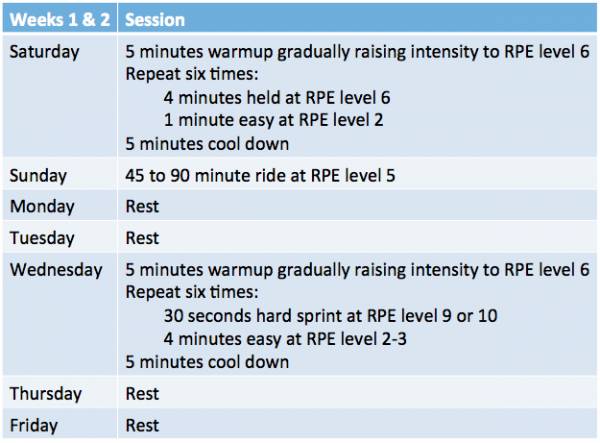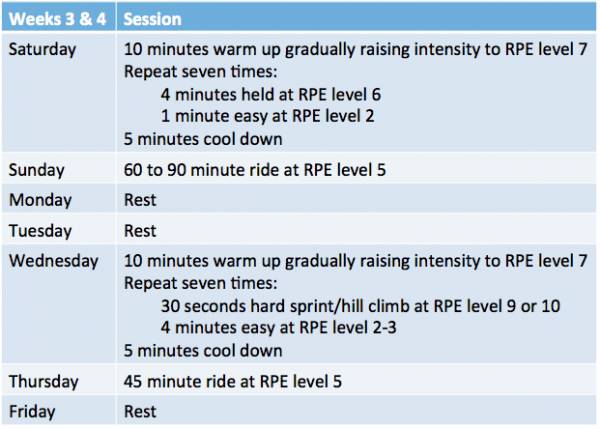Last month, I introduced a beginner cycling program that included tips for checking your bike over and some initial training sessions to start you on your fitness journey (or get you restarted after a long, cold winter).
This month, I am going to share a slightly more advanced program. Having made a start with last month’s program (or if you have been doing your own thing), this next program will help you improve your strength on the bike, develop your cardiovascular fitness, and burn up some calories in the process.
Note: As before, you do not need any complicated training equipment – just you, your bike, and a simple cycle computer to track distances and times. Last month’s article included checking the bicycle fit and correct pedaling technique, so I am assuming that is all dealt with.
Gauging Perceived Effort
For this program, I will be using a simple scale of rate of perceived exertion (RPE) ranging from one to ten, where one is very light and ten is maximum effort.

The four-week program is arranged in two fortnightly blocks (that’s “every two weeks” in American English). At the end of the four weeks, you should take an easy week of just a couple thirty-minute sessions at RPE level four or five to recover. While I have indicated what days you might like to perform each session, you can change them to suit your schedule. If you are shut in due to bad weather, you can of course do your sessions on a trainer or gym bike, too.
Getting Started
The first two weeks start at a weekend and are comprised of four-minute brisk intervals followed by a longer ride. These are aimed at improving your cardiovascular fitness and endurance.
“At the end of the month and a following easy recovery week, you should feel a lot stronger and able to tackle more advanced rides.”
Mid-week there is a more intense interval session. You may find this easier to do via hill climbs if outside or on a trainer if inside. This more intense session is aimed at increasing your strength and speed and consists of thirty seconds hard work and four minutes recovery. The interval sets have six repeats before cooling down.

The second two weeks build upon the first two by increasing the number of repeats. In addition, an extra mid-week session is included to help boost your endurance.

Logging Your Results
Keep a log in your training diary of what is planned and what you did. The cycling computer will come in handy to record your time and distances for each session. There are many ways to keep a log, so find the way that works best for you. One approach might be to use a simple phone or tablet app like OneNote, which I described in a previous article.
If you are performing these sessions outside, take precautions to stay safe and out of the way of traffic. At the end of the month and a following easy recovery week, you should feel a lot stronger and able to tackle more advanced rides.
Check out these related articles:
- Power to the Pedal – Be a More Efficient Cyclist
- Avoiding Wrist and Elbow Injury
- The Best Tools to Track Your Cycling Progress
- What’s New On Breaking Muscle Today
Photo courtesy of Shutterstock.






